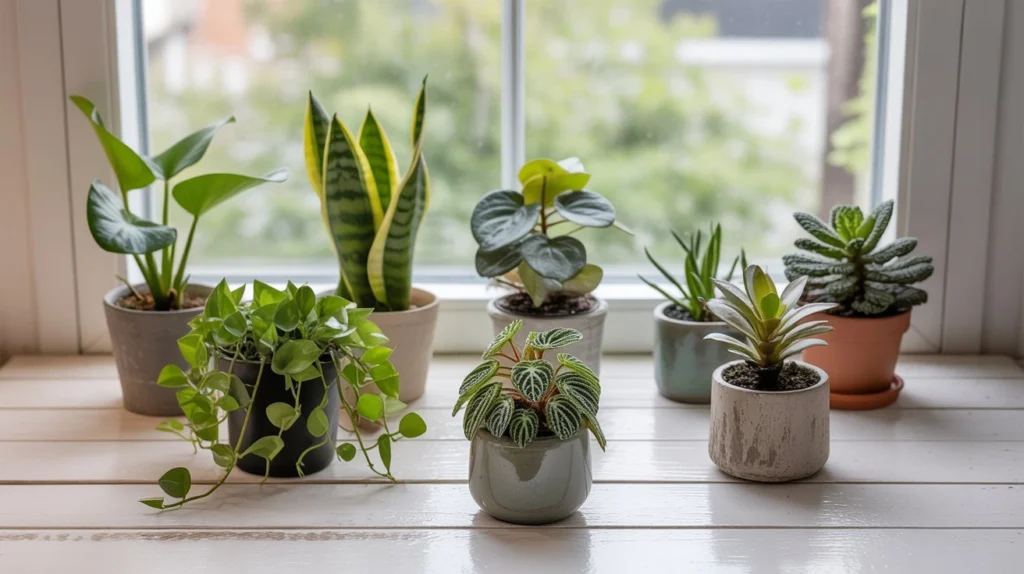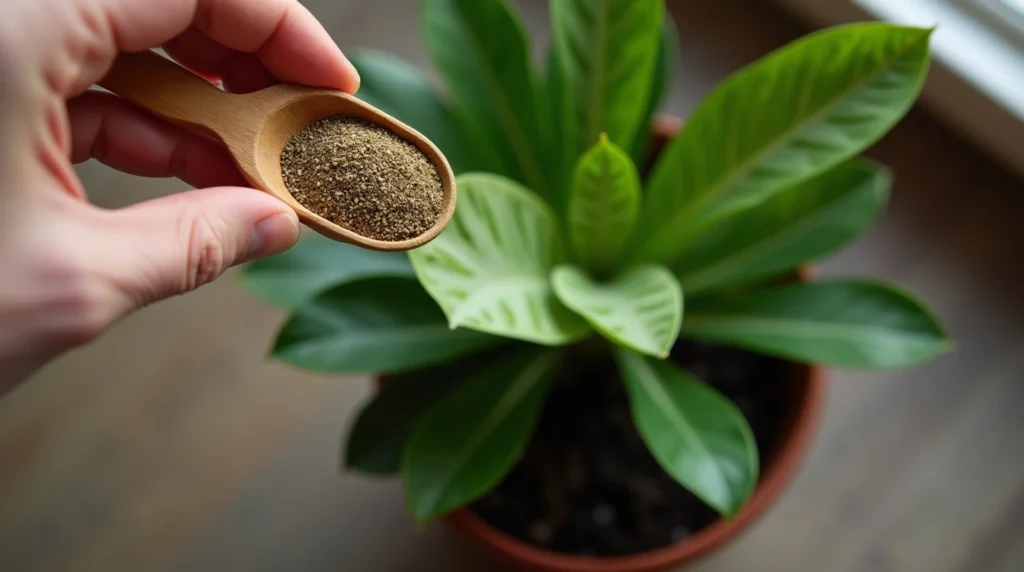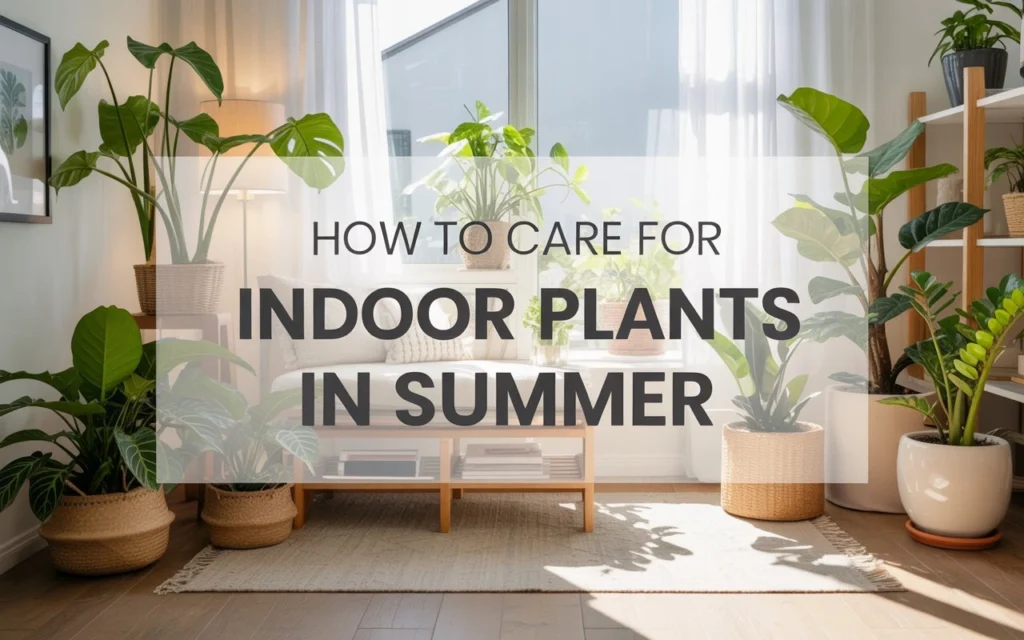
As summer comes, our indoor plants need a change, just like us. The heat, drying air, and sun can harm them. It’s crucial to know how to care for indoor plants in summer to keep them healthy.
If your plants are droopy, the soil is drying too fast, or you’re unsure about fertilizing, this guide is for you. It will cover everything you need to know to help your plants thrive during the warmer months.
Table of Contents
1. Understand the Summer Stressors
Before we dive into tips, let’s talk about why summer care is important.
What changes in summer?
- Increased sunlight: More light can be too much for shade-loving plants.
- Higher temperatures: Hot rooms and windows can scorch sensitive leaves.
- Dry air: Fans and air conditioners reduce humidity.
- Faster soil drying: More evaporation = quicker dehydration.
These changes mean you might need to adjust your care routine.
2. Adjust Your Watering Routine
In summer, plants need more water. But don’t water on a fixed schedule. Check the soil daily with your finger. Water when the top 1–2 inches are dry.
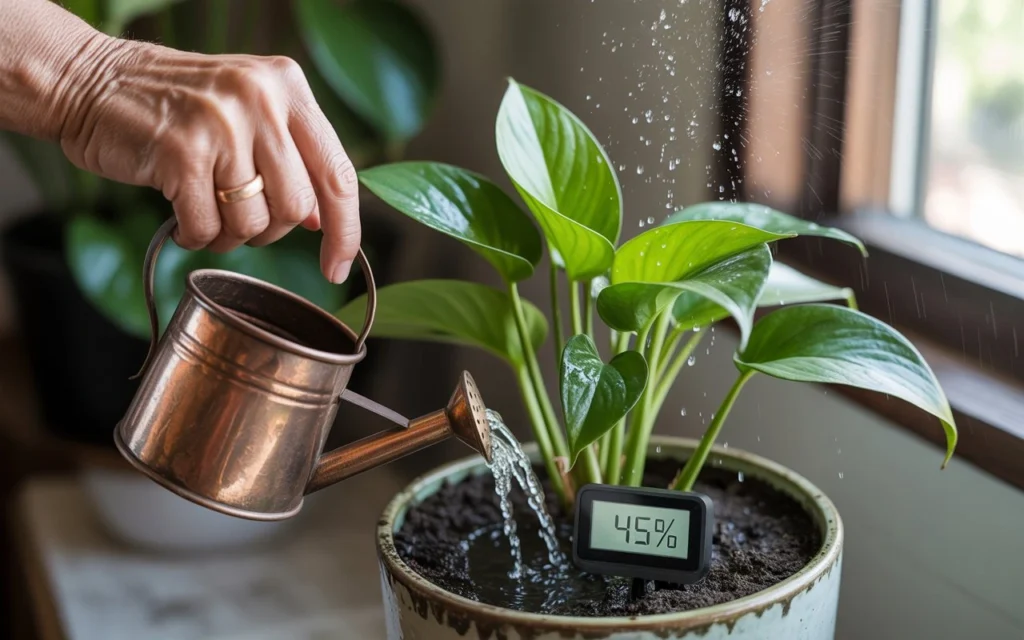
- Water early in the day to avoid mildew or fungal problems.
- Use room temperature water to avoid shocking roots.
- Be mindful of pot drainage to prevent root rot.
Avoid overwatering, which can harm plants like succulents and snake plants. More heat doesn’t always mean more water!
3. Manage Sunlight Exposure
More sunlight can stress plants that prefer shade. South- or west-facing windows can burn leaves, harming plants like peace lilies or calatheas.
Solutions:
- Move sensitive plants 2–3 feet away from hot windows.
- Use sheer curtains or blinds to filter direct sun.
- Rotate plants weekly to ensure even growth and prevent sunburn.
Bright but indirect light is best for most houseplants in summer.
4. Protect Plants from Heat & Drafts
Indoor plants prefer a steady environment. But summer brings temperature swings from open windows, fans, and AC units.
Tips to regulate plant temperature:
- Ideal range: 65°F–75°F (18°C–24°C)
- Keep plants away from direct airflow (AC vents, fans).
- Don’t place pots on hot windowsills or near radiators.
Some plants, like ferns and philodendrons, can quickly dry out or crisp if exposed to heat or dry drafts.
5. Increase Humidity
Summer air might feel humid, but AC units often strip moisture from indoor environments. Many tropical plants suffer in this dry air.
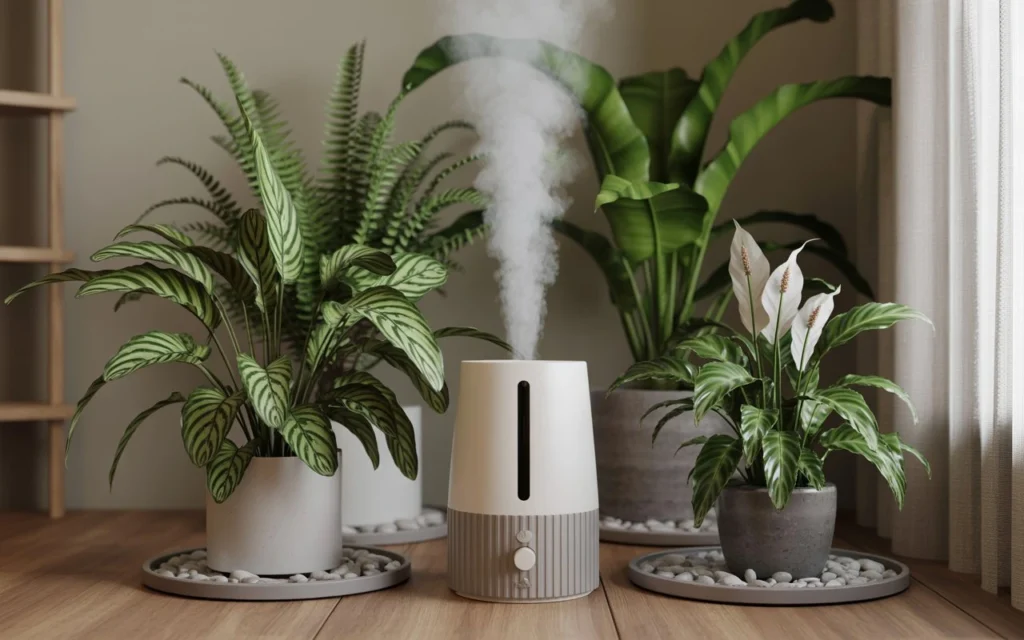
How to boost humidity:
- Use humidifiers in plant rooms.
- Place plants close together to create a humidity microclimate.
- Set up pebble trays under pots filled with water (without soaking roots).
- Mist high-humidity plants like calatheas and ferns in the morning.
Humidity-loving plants include:
Ferns, Calatheas, Alocasias, and Peace Lilies.
6. Fertilize Actively—But Carefully
Keyword: fertilizing houseplants in summer
Summer is a time for growth, so it’s the right time to feed your plants. But, it’s easy to overdo it.
Fertilizing rules for summer:
- Use a balanced liquid fertilizer (e.g., 10-10-10) every 4–6 weeks.
- Dilute it to half-strength for sensitive plants.
- Avoid fertilizing right after repotting—wait 3–4 weeks.
- Skip feeding if the plant is struggling from stress or pests.
Plants like pothos, monstera, and philodendrons do well with monthly feeding in summer.
7. Watch for Summer Stress Signs
Even with the best care, your plants may show signs of summer stress.
Common symptoms to watch:
- Yellow leaves: Could be sunburn or overwatering.
- Brown, crispy edges: Likely heat damage or low humidity.
- Drooping leaves: Could be dehydration—or overwatering!
- Slow growth or wilting: Check soil temperature and drainage.
Pro tip: A soil moisture meter or thermometer can help take the guesswork out of summer plant care.
8. Keep Leaves Clean & Pests Away
Dust and bugs thrive in summer. Regular cleaning helps your plant breathe and prevents pests.
- Wipe leaves with a damp microfiber cloth weekly.
- Use neem oil or insecticidal soap if you spot spider mites, which love dry summer air.
- Always isolate new or struggling plants to avoid infestations.
9. Your Summer Indoor Plant Care Checklist
Here’s a handy reference for your summer care routine:
✅ Check soil moisture daily
✅ Water in the morning when needed
✅ Move plants out of direct sunlight
✅ Monitor indoor temps (ideal: 65–75°F)
✅ Increase humidity with misting or trays
✅ Fertilize every 4–6 weeks
✅ Clean leaves & inspect for pests
✅ Rotate plants for even growth
✅ Watch for signs of heat stress
Read More :
Elevate Your Decor with These Gorgeous Indoor Foliage Plants
Conclusion: Let Your Plants Soak Up Summer (Safely)
Knowing how to care for indoor plants in summer gives you the tools to help your green friends grow strong without the stress. With just a few adjustments—like smarter watering, filtered light, and humidity boosts—you can enjoy vibrant, healthy houseplants all season long.
FAQ
Do indoor plants need more water in summer?
Yes, most indoor plants need more frequent watering during summer due to increased heat and faster evaporation. However, always check the soil before watering—overwatering is still a common mistake, even in hot weather.
Can indoor plants get sunburned in summer?
Absolutely. Many houseplants can get sunburned if placed in direct sunlight, especially near south- or west-facing windows. Use sheer curtains or move plants back a few feet to protect sensitive leaves.
How do I increase humidity for my indoor plants in summer?
You can increase humidity by misting plants, using pebble trays filled with water, grouping plants together, or running a humidifier. This is especially helpful for tropical plants like calatheas and ferns.
Should I fertilize my houseplants during summer?
Yes, summer is a great time to fertilize since plants are in their active growing phase. Use a diluted liquid fertilizer every 4–6 weeks, but avoid overfeeding, especially after repotting or when plants are stressed.
What temperature is too hot for indoor plants?
Most indoor plants prefer temperatures between 65°F and 75°F (18°C to 24°C). Prolonged exposure to temps above 85°F (29°C) can cause heat stress, wilting, and browning leaves, especially without proper airflow or humidity.
